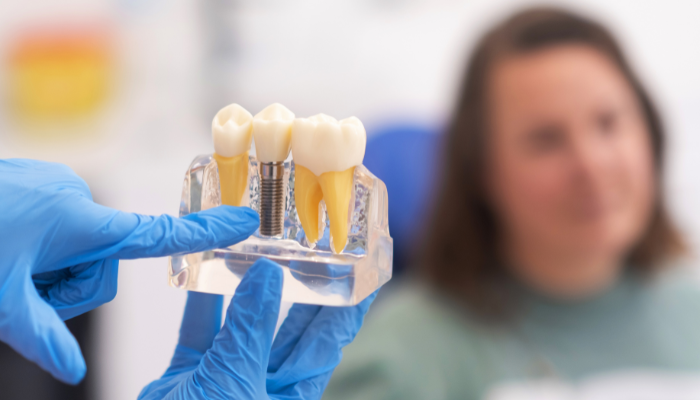Chronic back pain can be a relentless adversary, robbing you of joy and hindering your ability to live life to the fullest. It can disrupt sleep, limit mobility, and cast a shadow over everyday activities. If you’re exploring treatment options, spinal decompression therapy might have piqued your interest. But a crucial question lingers: how quickly does spinal decompression work?
This comprehensive guide delves into the world of spinal decompression, shedding light on its potential benefits, the timeline for pain relief, and factors influencing individual results. We’ll also address frequently asked questions to empower you to make informed decisions about your back health.
Understanding the Mechanics of Spinal Decompression Therapy
Spinal decompression is a non-surgical treatment for back pain caused by various conditions, including:
- Disc herniations: When the soft inner core of an intervertebral disc (the cushion between vertebrae) pushes through a tear in the outer wall, it can compress spinal nerves, leading to pain, radiating discomfort (sciatica), and numbness.
- Facet joint dysfunction: Facet joints connect the vertebrae and help with spinal movement. Inflammation or degeneration of these joints can cause back pain and stiffness.
- Spinal stenosis: This condition involves narrowing of the spinal canal, putting pressure on the spinal cord and nerves.
Spinal decompression therapy utilizes a specialized table designed to gently create a distraction force between the vertebrae. This distraction aims to achieve several therapeutic goals:
- Relieve pressure on spinal nerves: By increasing the space between vertebrae, decompression may alleviate pressure on pinched nerves, a common source of back pain and sciatica.
- Promote disc health: The distraction force might help retract bulging discs, allowing them to return to their proper position and potentially improve nutrient flow within the disc, aiding in healing.
- Enhance blood circulation: Improved blood flow to the spine can facilitate healing, promote the removal of inflammatory substances, and deliver essential nutrients for disc health.
The Potential Benefits of Spinal Decompression
Spinal decompression offers a range of potential benefits for individuals struggling with chronic back pain. Here’s a closer look at some key advantages:
- Pain Relief: Studies suggest that spinal decompression can be effective in reducing pain associated with disc herniations, facet joint dysfunction, and spinal stenosis. The distraction force may alleviate nerve compression, a primary culprit for pain.
- Improved Mobility: With reduced pain and pressure on nerves, individuals may experience increased flexibility and range of motion in the spine. This can lead to improved daily activities and participation in leisure pursuits.
- Enhanced Disc Health: The gentle distraction force might create an environment conducive to disc healing. By promoting retraction of bulging discs and potentially improving nutrient flow, decompression may contribute to disc health in the long term.
- Reduced Reliance on Medication: For some individuals, spinal decompression can offer a non-pharmaceutical approach to pain management, potentially reducing the need for pain medication and its associated side effects.
- Non-Surgical Option: Compared to surgical interventions for back pain, spinal decompression is a non-invasive treatment option. This can be particularly appealing for individuals hesitant about surgery or those with risk factors that might make surgery less suitable.
The Path to Relief: A Look at the Timeline for Pain Improvement
While individual experiences can vary significantly, a general timeframe for potential pain relief with spinal decompression exists. Here’s a breakdown of what you might expect:
- Weeks 1-2: Some patients report feeling a reduction in pain intensity within the first couple of weeks. This initial relief could be due to improved circulation, a change in disc position, or a reduction in muscle tension.
- Weeks 2-4: Many patients experience significant pain improvement by the fourth week. This timeframe coincides with the potential for disc retraction and decreased nerve compression, leading to noticeable pain relief.
- Weeks 4-6: This period often sees continued pain reduction and increased mobility for most patients completing the recommended treatment plan. Consistency with treatment sessions is crucial for optimal results.
It’s important to remember that these are estimates. Factors like the severity of your condition, your overall health, and your body’s response to treatment can influence your personal timeline.
Factors Affecting Individual Results with Spinal Decompression
Several factors can influence how quickly you experience relief and the overall effectiveness of spinal decompression therapy:
- The Underlying Cause of Your Pain: Decompression is most effective for specific back conditions. If your pain stems from a different source, such as muscle strain or a spinal fracture, results might be less pronounced.
- The Severity of Your Condition: Patients with mild to moderate disc herniations or facet joint issues tend to respond more favorably compared to those with severe cases where the structural damage is more extensive.
- Your Overall Health: Factors like age, weight, and Pregnancy
Conclusion
Spinal decompression offers a non-invasive approach to managing chronic back pain. While the timeline for relief can vary, many patients experience significant improvement within a few weeks. Remember, open communication with your doctor is vital to determine if spinal decompression is the right choice for you and to establish realistic expectations for your journey towards a pain-free back.
Frequently Asked Questions About Spinal Decompression
While some home decompression devices exist, it’s generally recommended to undergo treatment under the supervision of a qualified healthcare professional. They can ensure proper technique and monitor your progress for optimal results.
Spinal decompression is generally considered safe when performed by a qualified healthcare professional. However, it’s not suitable for everyone. Discuss any concerns with your doctor before starting treatment.
Mild side effects like muscle soreness or stiffness are possible but usually temporary.
The cost can vary depending on your location and the number of sessions required. Insurance may cover some or all of the treatment.
Other non-surgical options for back pain include chiropractic adjustments, physical therapy, and pain medication. Your doctor can help determine the best course of treatment for you.
Individual experiences vary, but some patients report feeling a reduction in pain intensity within the first couple of weeks. Many experience significant improvement by the fourth week, with continued progress through the treatment plan.





